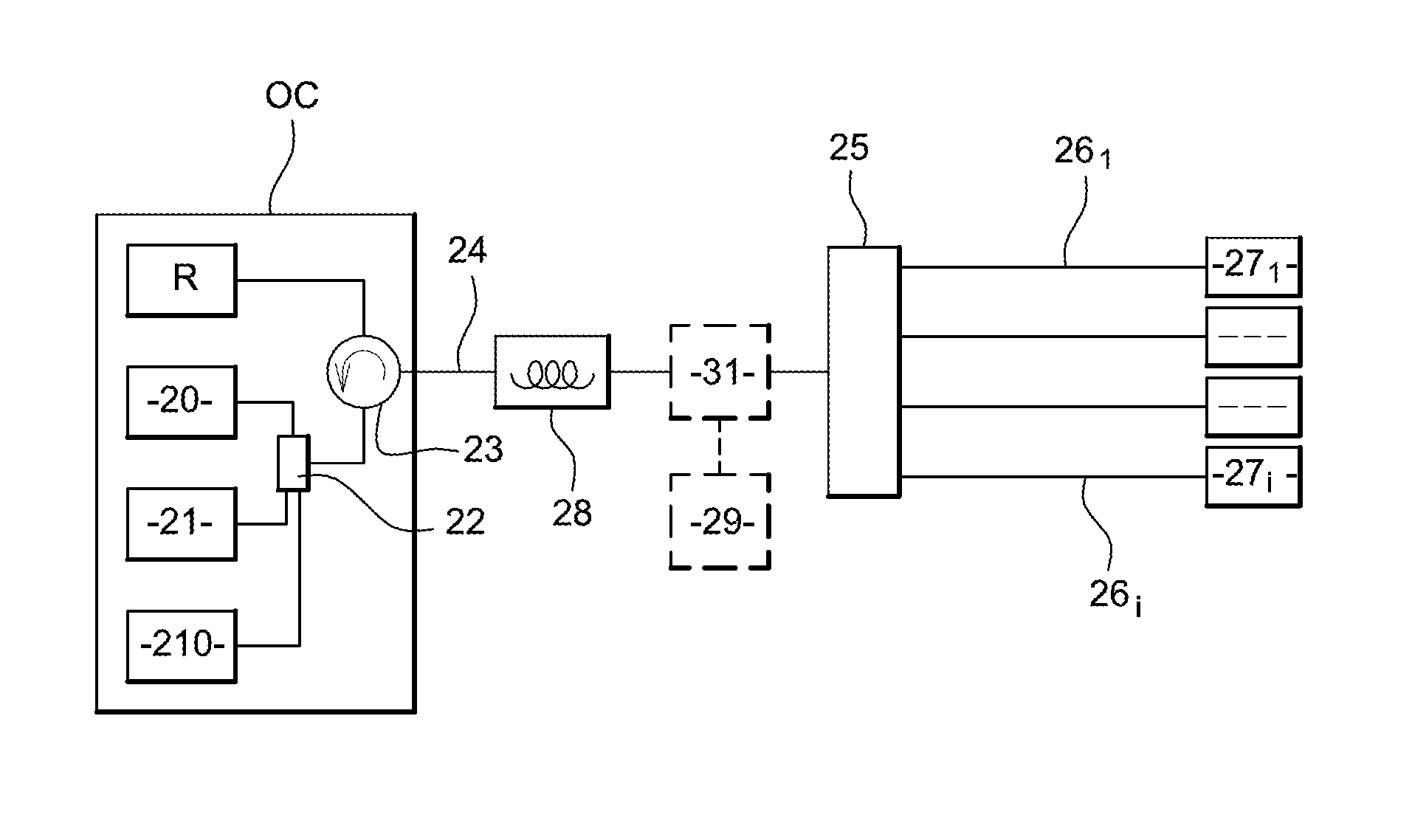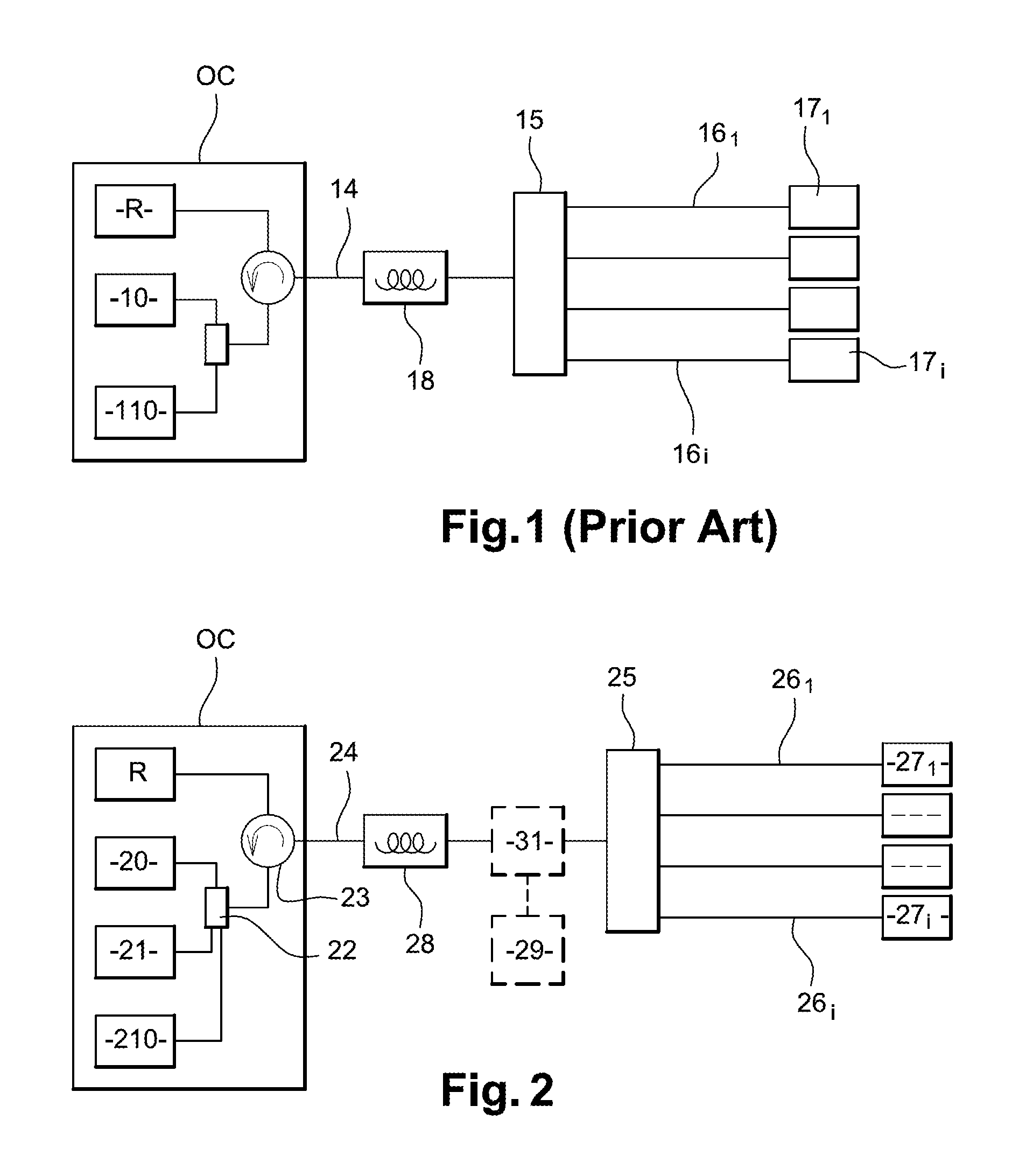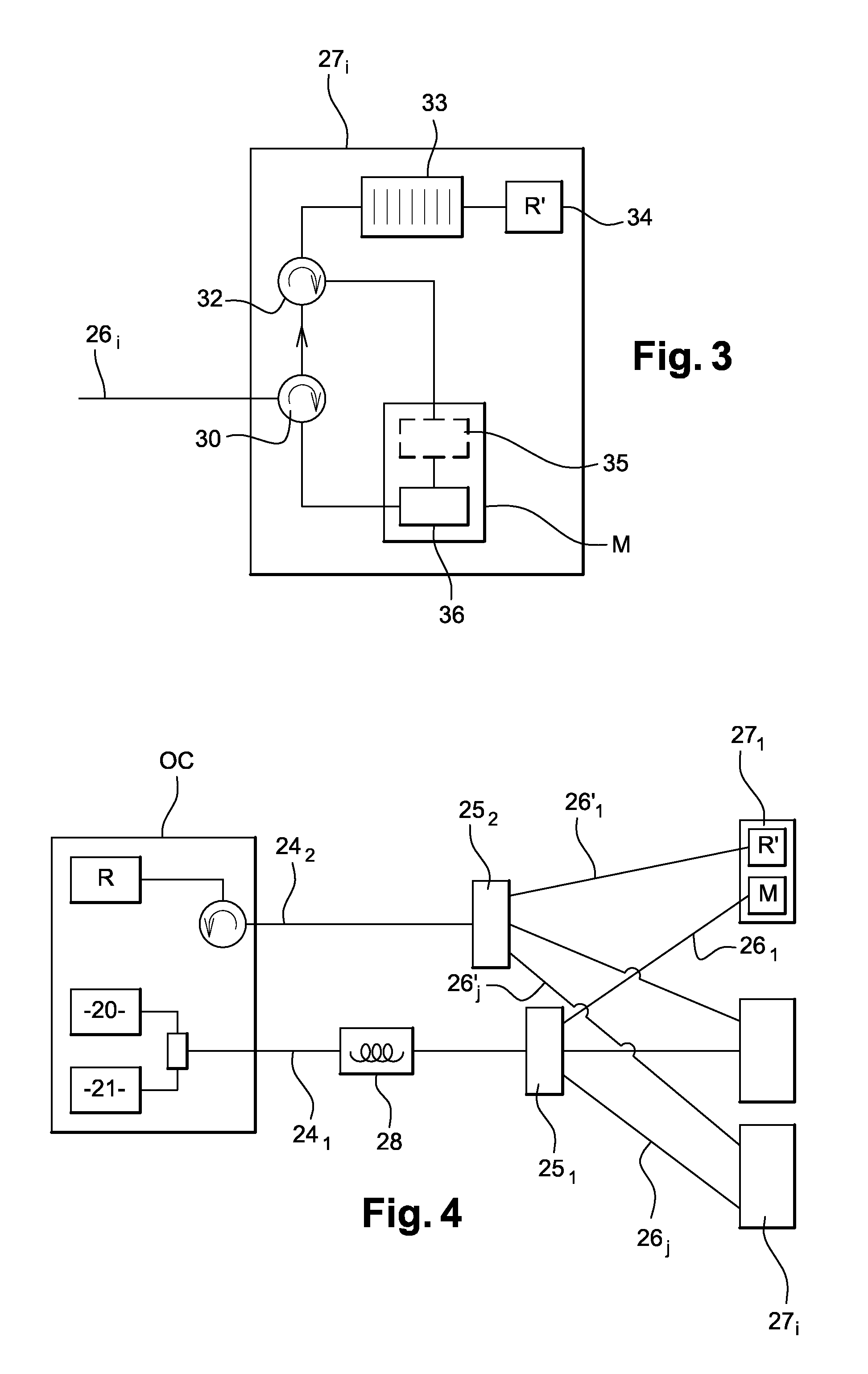Long-reach passive optical network using remote modulation of an amplification optical signal
remote modulation technology, applied in the field of optical access networks, can solve the problems of loss of optical power, limited network range, and signals being transmitted cannot be amplified to compensate such losses without incurring, and achieve the effect of reducing the operating cost of a passive optical network
- Summary
- Abstract
- Description
- Claims
- Application Information
AI Technical Summary
Benefits of technology
Problems solved by technology
Method used
Image
Examples
first embodiment
[0052]FIG. 2 represents a long-reach TDM passive optical point-to-multipoint network conforming to the invention. An optical central office OC constitutes a first end of the network. A first end of an optical fiber 24 is connected to the output of the optical central office OC. A second end of the optical fiber 24 is connected to the input of an optical coupler 25 having one input and N outputs, N representing the number of branches of the network. The optical fiber 24 is referred to as the main branch of the network. A first end of an optical fiber 26j, jε{1, 2, . . . , N}, is connected to one of the N outputs Sj of the optical coupler 25. A second end of the optical fiber 26j is connected to a line termination device 27i, iε{1, 2, . . . , N}, to which one or more users are connected. The optical fibers 261, to 26N are referred to as secondary branches of the network.
[0053]The optical central office OC includes a first laser 20 producing a first optical signal associated with a par...
second embodiment
[0068]Referring again to FIG. 2, the present invention is described. In this embodiment, the optical fiber is the only amplification medium for the data and amplification optical signals.
[0069]In this embodiment, the second amplification optical signal produced by the laser diode 210 excites the optical fiber 24 and so when the data optical signal passes through the optical fiber 24 its optical power is increased. The third amplification optical signal produced by the laser diode 21 excites the optical fiber 24 so that the optical power of the second amplification optical signal produced by the laser diode 210 is increased as it travels through the optical fiber 24.
[0070]For example, if the data optical signal is at a wavelength of 1550 nm, the second optical signal produced by the laser diode 210 must be at a wavelength of 1450 nm. To increase the optical power of the second amplification signal produced by the laser diode 210, the third amplification signal produced by the laser d...
PUM
 Login to View More
Login to View More Abstract
Description
Claims
Application Information
 Login to View More
Login to View More - R&D
- Intellectual Property
- Life Sciences
- Materials
- Tech Scout
- Unparalleled Data Quality
- Higher Quality Content
- 60% Fewer Hallucinations
Browse by: Latest US Patents, China's latest patents, Technical Efficacy Thesaurus, Application Domain, Technology Topic, Popular Technical Reports.
© 2025 PatSnap. All rights reserved.Legal|Privacy policy|Modern Slavery Act Transparency Statement|Sitemap|About US| Contact US: help@patsnap.com



